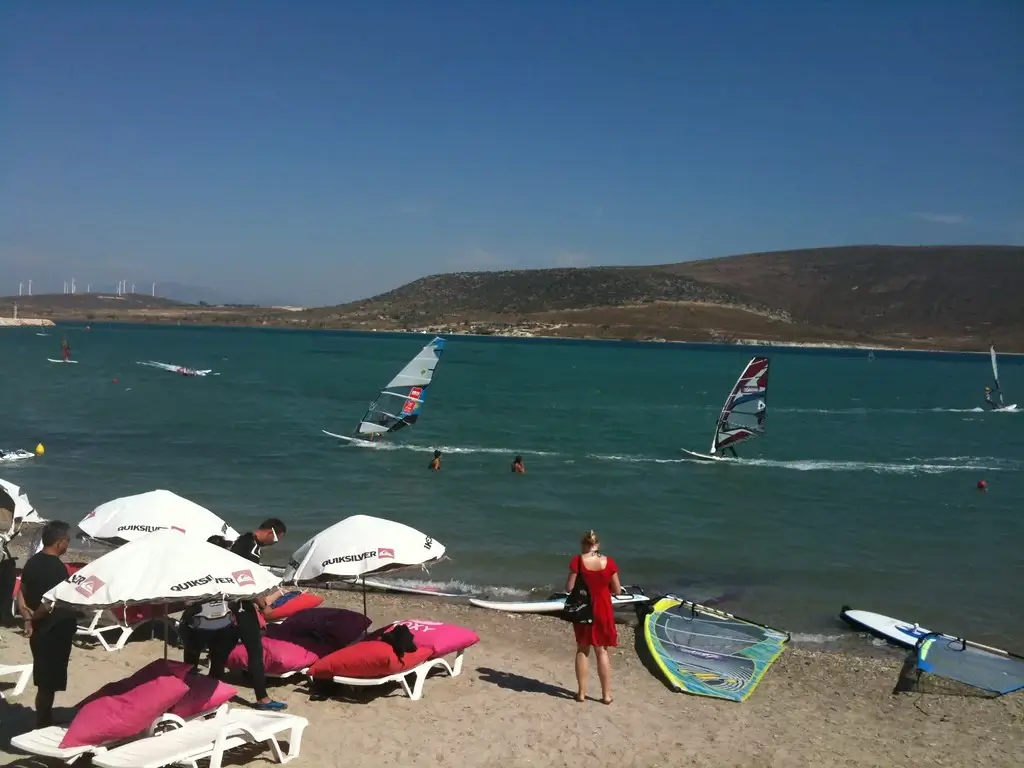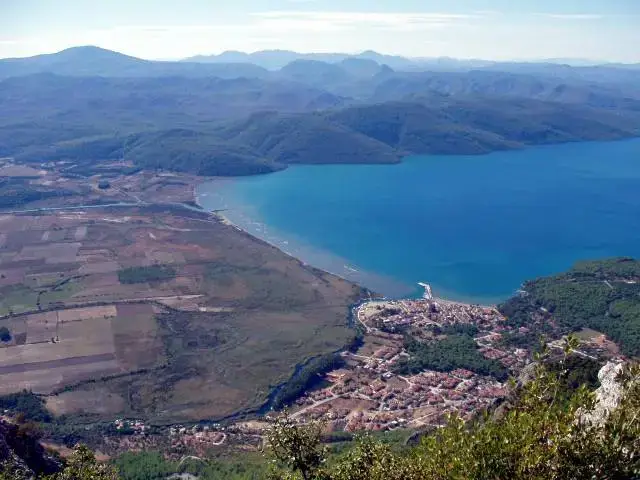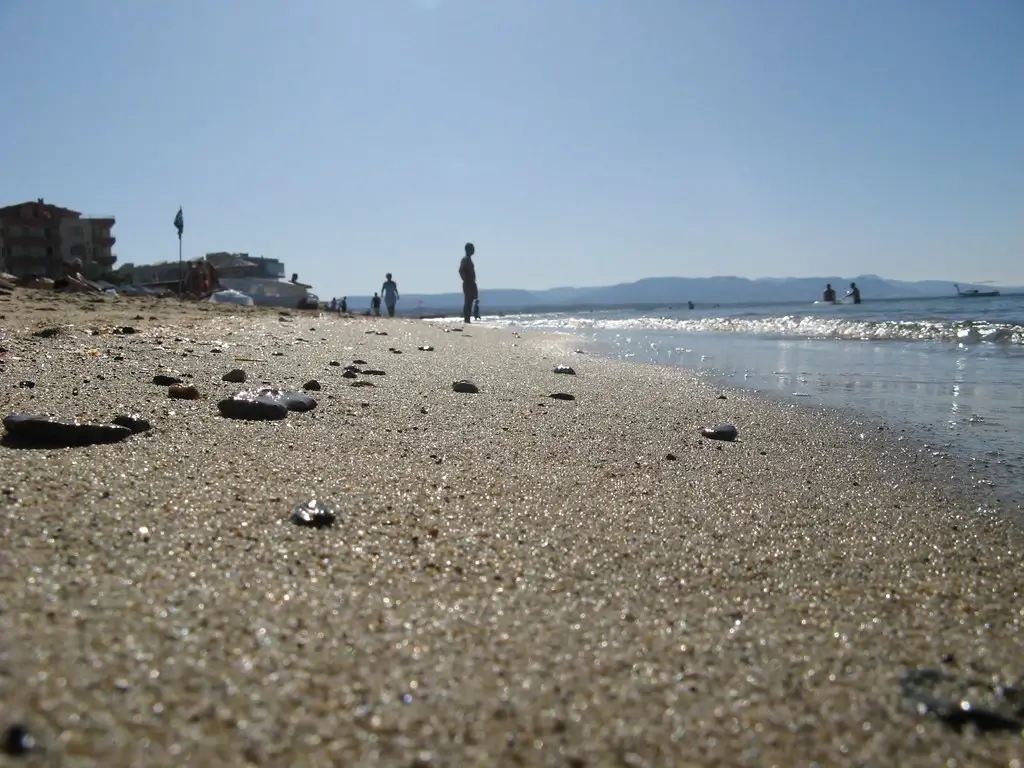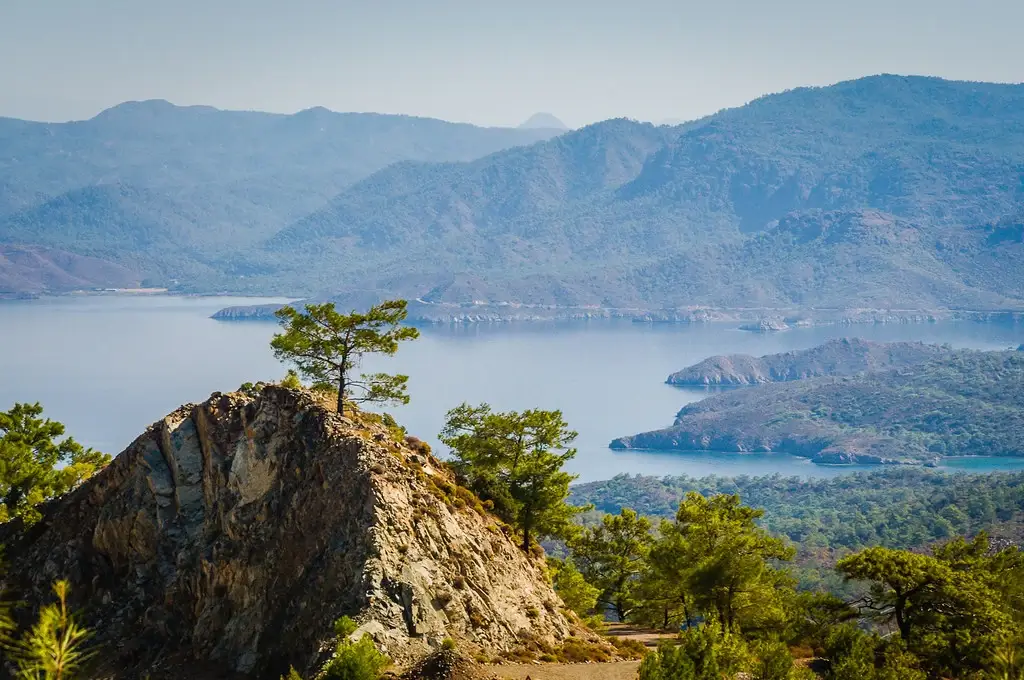Best Kitesurfing Spots in Turkey

Turkey offers a perfect mix of steady winds warm waters, and varied landscapes making it a top choice for kitesurfers. You can find smooth, mirror-like bays in Alaçatı and surf-friendly shores in Datça and Gökçeada giving you both flat and choppy water options in one visit. This article will show you the best kitesurfing spots in Turkey.
Each summer, warm inland temperatures and Aegean and Mediterranean coastal winds—known as the “Meltemi”—create a steady 15–25 knot wind window, fueling an unforgettable kitesurfing experience. Whether you’re just starting out or chasing big air, Turkey has it all: friendly kite schools, welcoming locals, and unforgettable culture.
This complete guide uncovers the best kitesurfing spots in Turkey, with detailed sections for hotspots like Alaçatı, Akyaka, Ayvalık, Gökçeada, and lesser-known gems like Datça and Bodrum. You’ll get insight into wind patterns, water types, gear tips, travel logistics, and more. Let’s dive in and prepare for your next Turkish kite adventure!
Why Turkey Is a Kitesurfer’s Dream Destination
Aegean & Mediterranean Coastline
Turkey boasts more than 8,000 kilometers of coastline, and a large chunk of it is ideal for kitesurfing. The Aegean coast, especially around the Çeşme Peninsula and Gökçeada, offers reliable winds, warm water, and flat to choppy conditions. The Mediterranean coast tends to be hotter and slightly less windy but still provides excellent riding spots, especially around Datça and Bodrum.
The Meltemi Wind Phenomenon
A major factor in Turkey’s kitesurfing appeal is the Meltemi wind—a dry, thermal wind that builds reliably between May and September. On good days, it picks up by late morning and continues into the evening, making it perfect for full-day kiting sessions. In places like Alaçatı and Gökova, the Meltemi creates side-shore or side-onshore wind, which is ideal for all skill levels.
- Average summer winds range from 15 to 25 knots
- Water temperatures from 22°C to 27°C (72°F–80°F)
- Warm air and little rain during the main season
Travel Convenience and Cultural Richness
Turkey is easily accessible from Europe, the Middle East, and parts of Asia. Its developed tourism infrastructure means you can find everything from 5-star resorts to budget-friendly kite camps. Plus, kiting here comes with a bonus: explore ancient ruins, enjoy world-class cuisine, and relax in Turkish hammams after a long day on the water.
When to Kite
Ideal Season: May to September
This is when the Meltemi winds are most consistent. Inland heating during the day creates a thermal effect that pulls wind across coastal regions.
Wind Reliability by Month
- May: Light to moderate winds, warm-up for the season
- June–August: Prime time with consistent 18–25 knots
- September: Still windy, fewer crowds, warm water
Off-Season Kiting
While winter months are generally windless, some spots like Gökçeada and Adana may have storm-driven winds. However, gear rental and school availability drops significantly.
Wind & Weather Overview by Month (Summary Table)
| Month | Wind (knots) | Water Temp (°C) | Air Temp (°C) | Crowds |
|---|---|---|---|---|
| May | 12–18 | 19–21 | 22–26 | Low |
| June | 15–22 | 22–24 | 27–32 | Medium |
| July | 18–25 | 25–26 | 30–35 | High |
| August | 18–25 | 26–27 | 32–38 | High |
| September | 15–22 | 24–26 | 27–32 | Medium |
| October | 10–18 | 22–23 | 22–28 | Low |
Best Kitesurfing Spots
Below are the top-rated kiteboarding destinations in Turkey, each offering unique features for various skill levels.

🏄♂️ Alaçatı (Çeşme Peninsula)
Why go: Alaçatı is Turkey’s most famous kitesurfing hub, located on the west coast near İzmir. It offers steady cross-shore winds, a shallow flat-water lagoon, and excellent facilities.
- Wind: 18–25 knots (June to September)
- Water Type: Flat, ideal for freestyle and beginners
- Skill Level: All levels
- Extras: Kite schools, rentals, cafes, and luxury stays

🏄♂️ Gökova Bay (Akyaka, Muğla)
Why go: A picturesque bay with a consistent thermal wind that funnels through the valley, Gökova is a hidden gem for flat-water lovers.
- Wind: 15–20 knots, building daily from noon
- Water Type: Flat and shallow for 300m out
- Skill Level: Beginners to intermediate
- Extras: Affordable accommodations, nature reserves
🏄♂️ Gökçeada (North Aegean)
Why go: Gökçeada (Imbros Island) is a wave spot beloved by experienced riders. Remote and wild, it’s perfect for wave and big air enthusiasts.
- Wind: 18–25 knots
- Water Type: Wave conditions on west beaches
- Skill Level: Intermediate to advanced
- Extras: Fewer crowds, ferry access from Çanakkale
🛑 Note: Limited kite schools, bring your own gear if possible.

🏄♂️ Ayvalık (Sarımsaklı Beach)
Why go: Located north of İzmir, Ayvalık offers long sandy beaches with a mix of flat and choppy water, suitable for all levels.
- Wind: 15–20 knots
- Water Type: Flat to small chop
- Skill Level: Beginner to intermediate
- Extras: Budget-friendly, family atmosphere

🏄♂️ Datça Peninsula (Muğla)
Why go: Datça’s consistent wind and open-water conditions make it a solid choice for those who like downwinders or wave riding.
- Wind: 15–25 knots
- Water Type: Small waves and chop
- Skill Level: Intermediate+
- Extras: Stunning nature, quieter vibe than Bodrum
Kitesurfing Schools & Gear Rentals in Turkey
Whether you’re a beginner or advanced rider, Turkey has a solid network of kitesurfing schools offering lessons, gear rental, and rescue services.
Top Kite Schools by Spot
Alaçatı:
- Alaçatı Surf Paradise Club
- KitePeople
- Services: Group and private lessons, full gear rental, rescue boats
Gökova (Akyaka):
- Gökova Kite Academy
- KiteTurkey
- Services: Beginner courses, IKO certification, gear storage
Gökçeada:
- Adaboost Kite Center
- Services: Intermediate+ coaching, rental for experienced riders
Datça:
- Datça Windsurf & Kitesurf School
- Services: Private coaching, downwinder organization
🧳 Tip: Pre-book rentals during peak months—availability can be tight in smaller towns.
How to Get to Turkey’s Kitesurfing Destinations
Nearest Airports
- Alaçatı & Ayvalık: İzmir Adnan Menderes Airport (ADB)
- Gökova & Datça: Dalaman Airport (DLM)
- Gökçeada: Çanakkale Airport + Ferry
Local Transport Options
- Rental cars are the best option for flexibility.
- Minibuses (dolmuş) connect major towns with kitesurfing beaches.
- Some schools offer hotel pick-up/drop-off services.
Quick Takeaways
- Alaçatı is Turkey’s premier kitesurfing destination with steady summer winds and flat water—ideal for all levels.
- Gökova (Akyaka) offers consistent thermal winds and a long beginner-friendly beach.
- Gökçeada delivers powerful winds and waves—great for advanced riders seeking adventure.
- Datça combines wave and chop conditions in a scenic, uncrowded setting.
- Wind season peaks between June and September, with average winds between 15–25 knots.
- Turkey has excellent kite schools, rental options, and accommodations across major spots.
- Easy access via airports in İzmir, Dalaman, and Çanakkale, with good road connections.
Conclusion
Turkey has quietly become one of the most diverse and rewarding kitesurfing destinations in Europe and Asia. With steady thermal winds, varied water conditions, and stunning natural backdrops—from ancient Aegean coastlines to island getaways—Turkey offers something for every level of kiter.
Whether you’re learning your first water starts in Gökova, chasing chop in Datça, or boosting in Gökçeada’s waves, you’ll find quality conditions, warm hospitality, and cultural depth rarely matched elsewhere.
Add to that the rich Turkish cuisine, accessible travel, and affordability—and you’ve got a destination worth exploring beyond the usual hotspots.
👉 Now it’s your turn: Pick your Turkish kite paradise, pack your quiver, and ride into an unforgettable kite adventure.
FAQs
1. When is the best time to kitesurf in Turkey?
The best season is from May to October, with peak wind reliability from June to August, especially in Alaçatı, Gökova, and Gökçeada.
2. Do I need a wetsuit in Turkey?
In summer months, a wetsuit is usually not necessary. A shorty wetsuit may be helpful in May or October, especially in northern spots.
3. Are the kite spots beginner-friendly?
Yes! Gökova and Alaçatı are especially beginner-friendly with flat water and plenty of kite schools.
4. What size kite should I bring?
Most riders use 9m to 12m kites during the wind season. A lightwind 14m can be helpful in early/late season.
5. Is it expensive to kitesurf in Turkey?
Turkey offers great value compared to Western Europe. Lessons, rentals, and accommodations are relatively affordable.
Join the Conversation
We’d love to hear from you!
Which kitesurfing spot in Turkey would you love to visit first?
Drop a comment below, share your favorite session stories, or tag us on social media with your Turkish kite adventures! 🪁🇹🇷
Don’t forget to share this guide with your kite crew!
